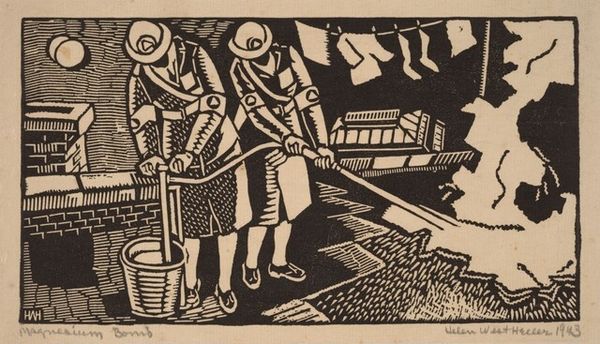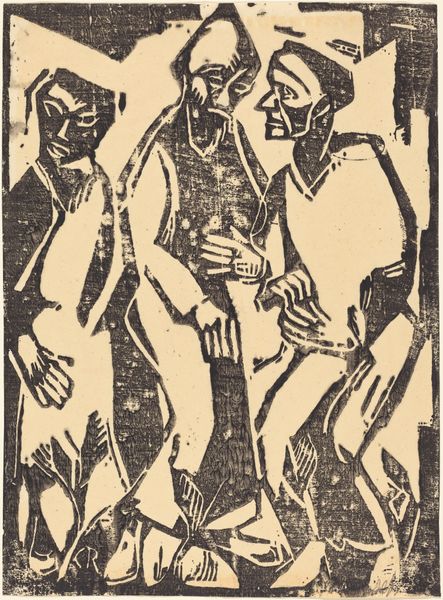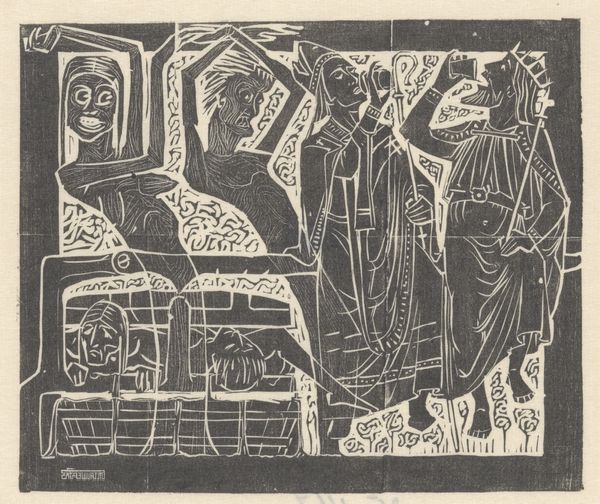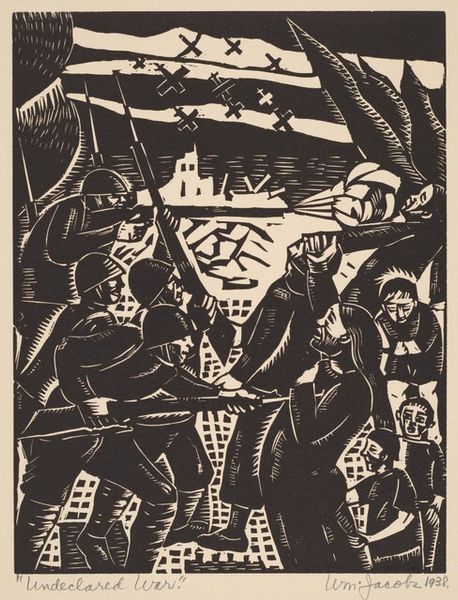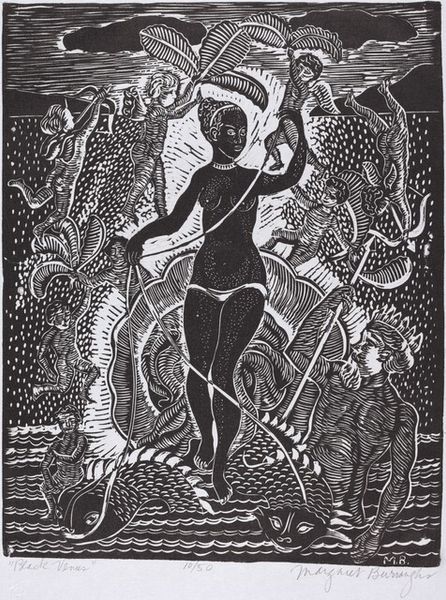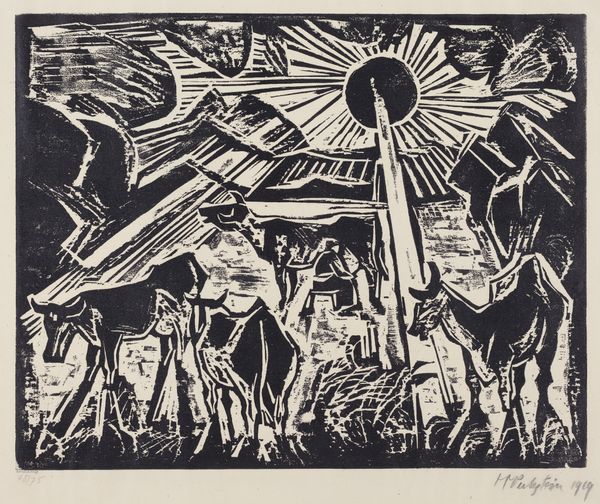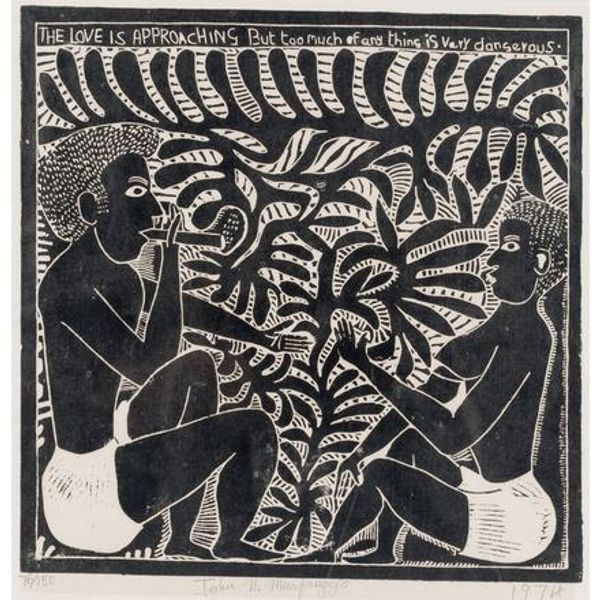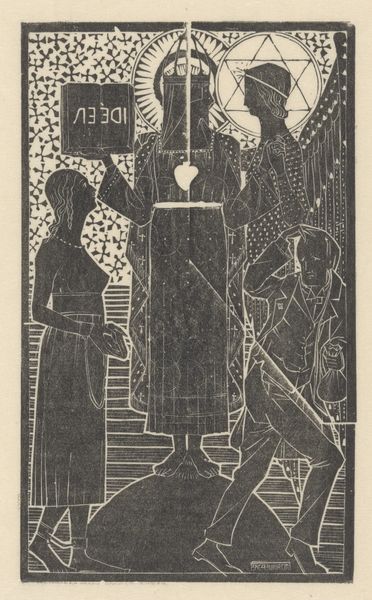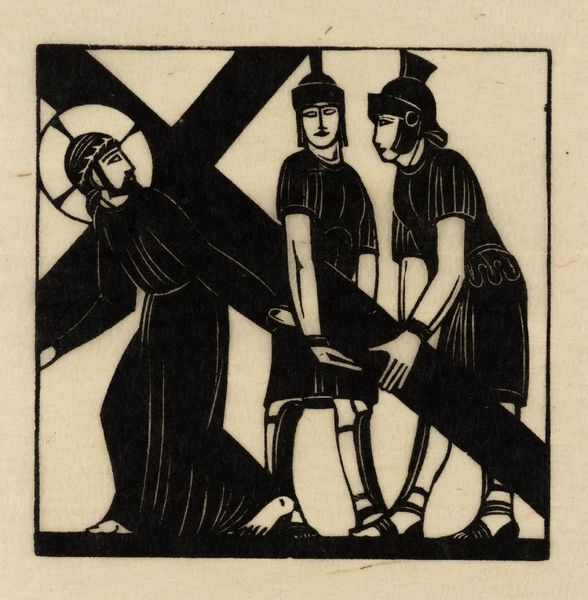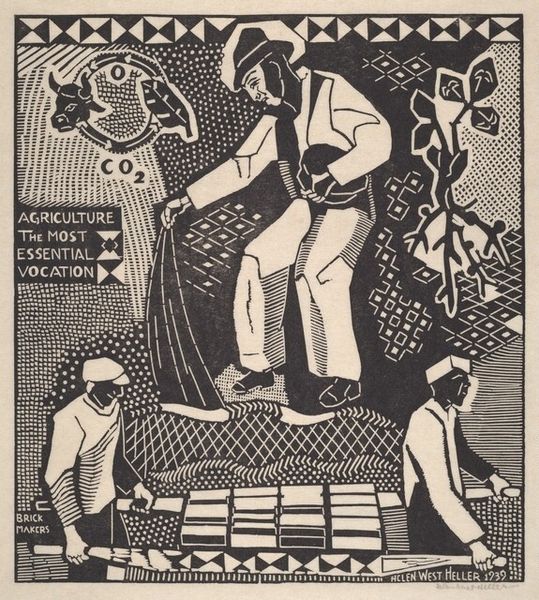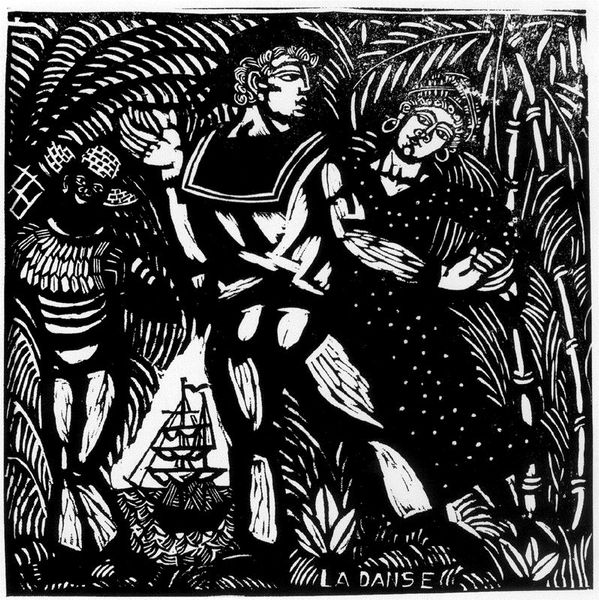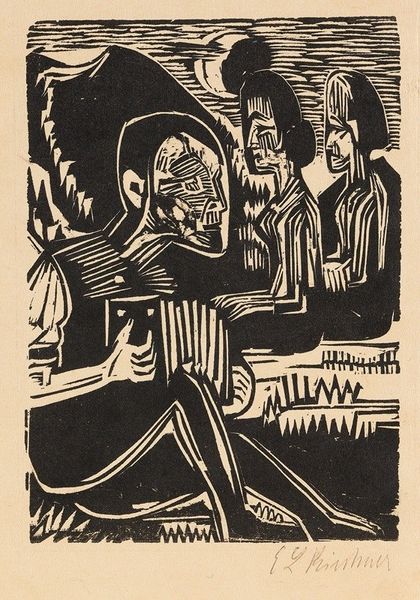
print, woodcut
#
african-art
#
food
# print
#
landscape
#
figuration
#
social-realism
#
folk-art
#
woodcut
#
genre-painting
Dimensions: 38 x 33 cm
Copyright: John Muafangejo,Fair Use
Curator: John Muafangejo's woodcut print, "Three Girls Stamping the Corn in Ovambo," created in 1980, immediately strikes a powerful chord, doesn't it? Editor: It does. It's so graphic. That stark black and white – it creates a sense of almost monumental simplicity. You feel the physical labor in it, a kind of rhythmic, pounding energy. Curator: Exactly. Muafangejo often used this linocut technique to depict scenes from daily life and comment on the socio-political landscape of Namibia under South African rule. He strips away unnecessary details to emphasize the core of the story. Editor: It reminds me a bit of WPA prints in the United States during the Depression, celebrating the dignity of work. Is there a similar dynamic here? Curator: Absolutely. Though his style is highly personal, his work aligns with social realism. The choice of subject – these women processing corn, a staple food – speaks volumes. They are Ovambo women; and through them Muafangejo presents labor as fundamental, and survival as communal. But remember Namibia's struggle with colonial rule, this image, in a quiet way, becomes a symbol of resistance through cultural preservation. Editor: The repetition of the figures, the tools, even the striped pattern on their skirts – it’s visually hypnotic, drawing the viewer into that cyclical, enduring rhythm of life. Curator: It does create a certain visual and rhythmic tension, doesn't it? The vertical lines add dynamism but there's such controlled stillness. You feel their combined force. And that force feels quietly subversive, doesn't it? Editor: Subversive, yes. It’s interesting how this image functions as a quiet yet resilient marker of identity and persistence amid such stark representation. Muafangejo wasn’t just making art; he was archiving a cultural narrative. Curator: Yes, his work speaks not just to its own time, but resonates with themes of resilience and community that continue to matter deeply today. It's a striking testament to the power of art to document, preserve, and quietly resist.
Comments
No comments
Be the first to comment and join the conversation on the ultimate creative platform.

